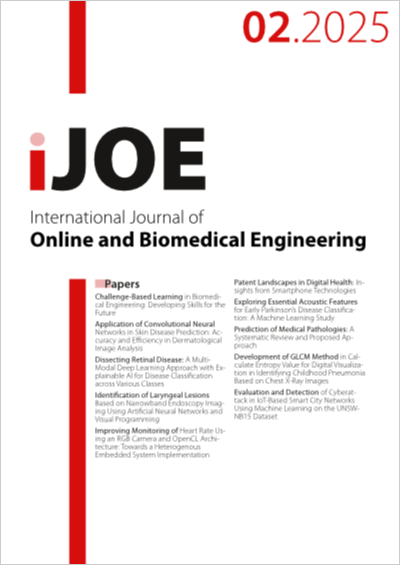Improving Monitoring of Heart Rate Using an RGB Camera and OpenCL Architecture: Towards a Heterogenous Embedded System Implementation
DOI:
https://doi.org/10.3991/ijoe.v21i02.52203Keywords:
Heart activity, Embedded systems, Heterogeneous architecture, CPU-GPU, OpenCLAbstract
Conventional heart rate (HR) monitoring typically relies on contact sensors, but recent advancements demonstrate the potential of non-contact methods using RGB cameras for photoplethysmography (PPG)-based HR analysis. This study presents a real-time, non-contact HR monitoring system that applies signal processing techniques to accurately derive HR from facial video data. Our approach mitigates environmental and motion-induced noise through image enhancement and signal filtering while utilizing Fourier analysis to extract physiological signals from the processed PPG data. Implemented on a heterogeneous CPU-GPU system with high-level synthesis (HLS) for parallel acceleration, our proposed system achieves a substantial improvement in processing efficiency, outperforming the baseline method by a factor of 3.53 in processing time. These results underscore the system’s potential for integration into embedded healthcare monitoring applications, offering a pathway for reliable, non-invasive physiological monitoring.
Downloads
Published
How to Cite
Issue
Section
License
Copyright (c) 2024 Zakaria EL KHADIRI, Rachid LATIF, Amine SADDIK

This work is licensed under a Creative Commons Attribution 4.0 International License.



